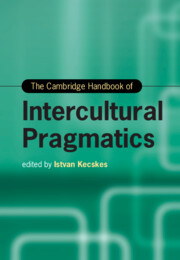Book contents
- The Cambridge Handbook of Intercultural Pragmatics
- Cambridge Handbooks in Language and Linguistics
- The Cambridge Handbook of Intercultural Pragmatics
- Copyright page
- Contents
- Figures
- Tables
- Acknowledgment
- Contributors
- Introduction The Rise of Intercultural Pragmatics
- Part I Theoretical Foundation
- Part II Key Issues in Intercultural Pragmatics Research
- Part III Interface of Intercultural Pragmatics and Related Disciplines
- Part IV Intercultural Pragmatics in Different Types of Communication
- Part V Language Learning
- 28 Pragmatic Competence
- 29 Pragmatic Awareness in Intercultural Language Learning
- 30 Interculturality and the Study Abroad Experience: Pragmatic and Sociolinguistic Development
- 31 Intercultural Mediation in Language Learning
- 32 Interaction in the Multilingual Classroom
- Index
- References
32 - Interaction in the Multilingual Classroom
from Part V - Language Learning
Published online by Cambridge University Press: 29 September 2022
- The Cambridge Handbook of Intercultural Pragmatics
- Cambridge Handbooks in Language and Linguistics
- The Cambridge Handbook of Intercultural Pragmatics
- Copyright page
- Contents
- Figures
- Tables
- Acknowledgment
- Contributors
- Introduction The Rise of Intercultural Pragmatics
- Part I Theoretical Foundation
- Part II Key Issues in Intercultural Pragmatics Research
- Part III Interface of Intercultural Pragmatics and Related Disciplines
- Part IV Intercultural Pragmatics in Different Types of Communication
- Part V Language Learning
- 28 Pragmatic Competence
- 29 Pragmatic Awareness in Intercultural Language Learning
- 30 Interculturality and the Study Abroad Experience: Pragmatic and Sociolinguistic Development
- 31 Intercultural Mediation in Language Learning
- 32 Interaction in the Multilingual Classroom
- Index
- References
Summary
Classroom language ecologies are increasingly diverse as a result of mobility, migration, and information technology. In these spaces, interlocutors may draw upon shared linguistic and cultural resources but also bring in others. Prime examples are additional-language (AL) classrooms, where there is a shared target language, but where students may have different first languages from their classmates and teacher. In this chapter, we review empirical research on interaction in multilingual classrooms in approaches such as ethnography, translanguaging, and conversation analysis (CA), and discuss methods and findings in relation to the growing field of intercultural pragmatics (IP). Additionally, we offer an empirical illustration from video ethnography research in multilingual English AL classrooms in Sweden. With a CA approach, we demonstrate how a group of students participating in a vocabulary game manage an instance of diverging understandings of an English word. We show how, in resolving this interactional trouble, participants draw on the target language English and the societal/school language Swedish, and we discuss the observations in light of the IP concepts of salience and common ground. Finally, we argue that classroom studies detailing social actors’ language repertoires by using audiovisual data are essential in advancing our understanding of multilingual AL classrooms.
Keywords
- Type
- Chapter
- Information
- The Cambridge Handbook of Intercultural Pragmatics , pp. 836 - 868Publisher: Cambridge University PressPrint publication year: 2022
References
- 1
- Cited by

